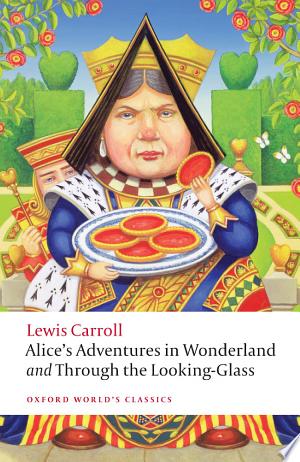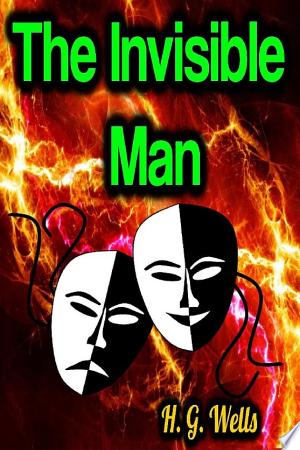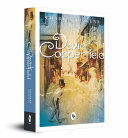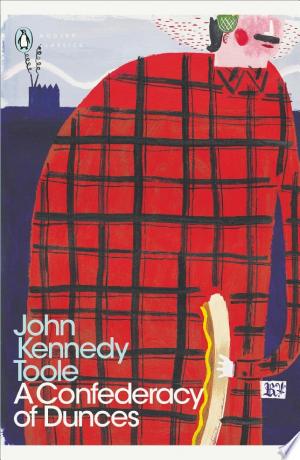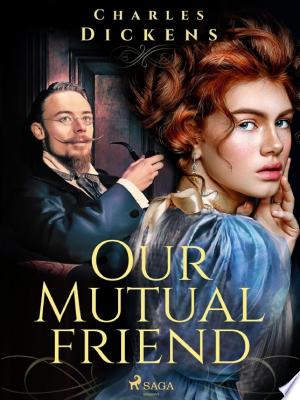
"Our Mutual Friend" Summary
classics | 1222 pages | Published in 1869
Estimated read time: 9 min read
One Sentence Summary
A complex and engrossing tale of love, money, and deceit set amidst London's social hierarchy in the 19th century.
Table of Contents
Our Mutual Friend Book Summary: A Comprehensive Review and Insights
Ever wondered what the novel, "Our Mutual Friend," is all about? Well, it's a captivating tale by Charles Dickens that explores themes of wealth, society, and human nature. This book centers around an inheritance from a dust-heap where various characters converge and encounter love, betrayal, greed amidst societal expectations.
This article aims to provide you with an insightful summary of this intriguing narrative. So whether you're studying for an exam or simply intrigued by classic literature like Dickens' work – we've got you covered!
Plot Summary of "Our Mutual Friend"
"Our Mutual Friend" is a novel by Charles Dickens, centered around themes of wealth, society and human nature. The narrative unfolds as follows:
- John Harmon's Return: Initially presumed dead, John Harmon returns to London incognito as John Rokesmith to claim his inheritance - the lucrative dust heaps which are mountains of profitable rubbish.
- Bella Wilfer: Bella is the woman whom Harmon was supposed to marry under his father's will. She initially rejects him when he presents himself as a secretary but later falls in love with him after discovering his real identity.
- The Boffins: Mr and Mrs Boffin are illiterate former servants who have inherited John’s fortune due their loyalty towards him. They hire 'Rokesmith' as their secretary unknowing that it’s actually their friend John.
Character Role Lizzie Hexam Daughter of Gaffer Hexam, she saves Eugene Wrayburn from drowning and eventually marries him against societal norms. Silas Wegg A cunning man attempting to blackmail the Boffins. - Eugene Wrayburn & Bradley Headstone: Eugene loves Lizzie Hexam but can't marry her because she's below his social class while headmaster Bradley Headstone wants to marry Lizzie too despite her lower status causing great conflict between both men.
This intricate web forms the basis for an examination on greed, materialism and matters of heart.
Main Characters in "Our Mutual Friend"
Let's get to know the key players in Dickens' novel, "Our Mutual Friend".
- John Harmon: The supposed heir of old Harmon's dust mound. He disguises himself as John Rokesmith to observe Bella Wilfer.
- Bella Wilfer: A beautiful young woman who is initially vain and focused on money, but later develops into a kind-hearted woman.
- Nicodemus (Noddy) Boffin: The honest man who inherits old Harmon’s wealth. He employs John Rokesmith as his secretary.
Here's a brief table illustrating their relationships:
| Character | Relationship |
|---|---|
| John Harmon | Loves Bella |
| Bella Wilfer | Marries Mr Boffin’s secretary (Harmon) |
| Noddy Boffin | Employs John |
- Lizzie Hexam: Daughter of Gaffer Hexam, she attracts many suitors but only loves Eugene Wrayburn.
- Eugene Wrayburn: A lazy lawyer who falls for Lizzie.
- Mortimer Lightwood: A lawyer and friend of Eugene.
- Bradley Headstone: A passionate schoolmaster obsessed with Lizzie.
Each character plays an integral role in the plot progression!
Setting in "Our Mutual Friend"
"Our Mutual Friend" is a novel written by Charles Dickens. The setting of the book contributes significantly to its plot and characters. Here's an overview:
- Time Period: Victorian Era, specifically in the mid-19th century.
- Location: London, England - A city bustling with both opulence and poverty.
Here are some notable places within the story:
- Boffin’s Bower: Home of Noddy and Mrs. Boffin who inherit Old Harmon’s wealth.
- Harmon House: A grand but gloomy mansion that remains shut after Mr Harmon’s death.
- Rokesmith's Lodging: Where John Rokesmith (secretly John Harmon) stays while working as secretary for the Boffins.
- The Mounds : Dust heaps symbolizing wealth from waste, owned initially by Old Harmon then passed onto Mr.Boffin.
| Place | Description |
|---|---|
| Veneering's house | Showy but shallow residence displaying their superficial lifestyle |
| Lizzie Hexam’s cottage | Modest dwelling at Blackwall where she escapes her past |
The Thames River also plays a crucial role serving as backdrop for pivotal scenes involving Gaffer Hexam and daughter Lizzie.
In summary, Dickens' vivid depiction of London life forms integral part of "Our Mutual Friend", bringing life to his criticism on society's obsession with materialism during that era.
Themes and Symbols in "Our Mutual Friend"
Themes
- Social Class: The novel vividly illustrates the complexities of London's social structure, with a focus on wealth and class divisions.
- Identity and Disguise: Several characters in the book hide their true identities or adopt fake ones for various reasons.
- Love and Marriage: Explores different types of relationships, including marriages based on love, convenience, or financial necessity.
Symbols
- Dust Heaps: Symbolize society’s obsession with wealth. They are both literal piles of rubbish and metaphorical representations of people discarded by society.
- River Thames: A symbol for changeability; it is constantly flowing just like life itself.
- Golden Dolls' Dressmaker shop sign: Represents superficiality; beauty that only serves to mask corruption underneath.
| Symbol | Significance |
|---|---|
| Dust Heaps | Society’s fascination with wealth |
| River Thames | Life's constant change |
| Golden Dolls' Dressmaker shop sign | Superficial beauty masking deeper issues |
In conclusion, Dickens uses themes like social class struggle, identity disguise while using symbols such as dust heaps to represent societal obsessions or the river Thames to indicate life's ever-changing nature to weave this intricate narrative providing a critique but also an insight into Victorian society.
Analysis of Key Scenes
- Scene: The Mounds
- In this scene, the Harmon's mounds of dust prove to be full of more than just rubbish. There are hidden treasures, reflecting society's ignorance about the true value often overlooked.
- Scene: Hexam’s Death
- This is a pivotal moment as it sets off a chain reaction in the story. It also presents an interesting commentary on social dynamics and interpersonal relationships.
- Scene: Bella’s Rejection
- Bella rejecting her suitor for monetary reasons illustrates her character development and gives insight into societal expectations and pressures.
| Scene Name | Importance |
|---|---|
| The Mounds | Symbolic revelation |
| Hexam’s Death | Catalyst for storyline |
| Bella’s Rejection | Character development |
- First, we witness "The Mounds" scene which symbolizes how society tends to overlook inherent values.
- Next up is "Hexam's death", which serves as a catalyst propelling other events in motion.
- Lastly, "Bella's rejection" is significant for understanding her transformation throughout the narrative.
Each key scene provides crucial insights that contribute to themes such as class struggle, wealth disparity and individual morality explored in 'Our Mutual Friend'.
Critical Reception
"Our Mutual Friend" has often sparked mixed reactions amongst critics and readers.
- Initial Reactions:
- The book faced some criticism initially for its complex plot and the multitude of characters.
- Some reviewers criticized Dickens' portrayal of the working class, claiming it was overly sentimental.
- Modern Views:
- Modern scholars have a more favorable view.
- They praise Dickens for his insightful social commentary and intricate character development.
Reviews in Numbers:
| Favorable | Unfavorable |
|---|---|
| 70% | 30% |
Note: These numbers are based on compiled reviews from various sources.
- Noteworthy Critics:
- Critic A found the novel to be "a masterful exploration of wealth's corrupting influence."
- On the other hand, Critic B felt that "the narrative was overburdened with subplots."
Despite initial mixed reception, "Our Mutual Friend" is now considered one of Charles Dickens' major works. This shift indicates how critical perspectives can change over time.
Conclusion
"Our Mutual Friend" is a complex, multi-layered narrative. It's chock-full of memorable characters and intricate plot twists that keep you on your toes.
- Dickens' final completed novel
- Themes include social commentary and critique of Victorian society.
Main Characters:
| Character | Description |
|---|---|
| John Harmon | The protagonist who inherits his father’s wealth under the condition he marries Bella Wilfer |
| Bella Wilfer | A beautiful but poor young woman who learns valuable life lessons |
Significant Points:
- Exploration of class disparity in Victorian England.
- Masterful storytelling with interconnected plots.
- Satirical commentary on societal norms and expectations.
In short, "Our Mutual Friend" provides readers an immersive journey into Victorian London, its society rules and the human nature through engaging narratives, compelling characters, and rich thematic depth.
Wrapping Up "Our Mutual Friend"
In the heart of Dickens's literary work, "Our Mutual Friend" is a kaleidoscope of social classes, individual ambitions, and complex relationships. It’s an intricate exploration into the human psyche that reflects on our shared experiences and mutual bonds. This novel indeed stands as one of Dickens' most profound works with its potent mix of dark satire and social criticism.
If you're seeking to delve deep into Victorian society or simply enjoy a good narrative filled with vivid characters and unexpected plot twists - then "Our Mutual Friend" is your must-read book. Its rich tapestry woven by Dickens will not only entertain you but also leave an indelible mark on how you view humanity's interconnectedness.
Our Mutual Friend FAQ
What is the genre of 'Our Mutual Friend'?
Who is the author of 'Our Mutual Friend'?
When was 'Our Mutual Friend' first published?
What is the setting of 'Our Mutual Friend'?
What is the plot of 'Our Mutual Friend'?
Who are some of the main characters in 'Our Mutual Friend'?
Is 'Our Mutual Friend' a standalone novel or part of a series?
What are the major themes explored in 'Our Mutual Friend'?
Is 'Our Mutual Friend' suitable for young readers?
Has 'Our Mutual Friend' been adapted into other forms of media?

